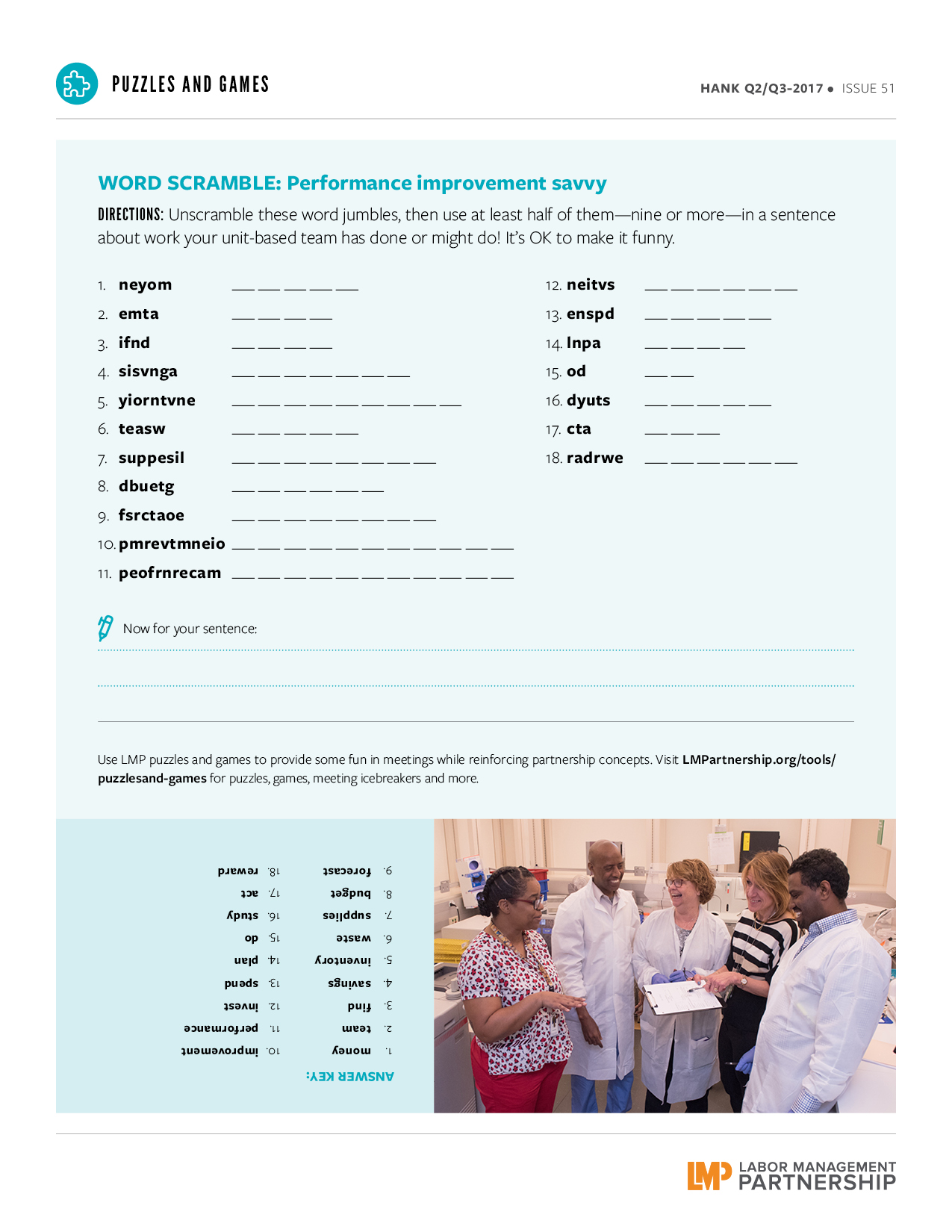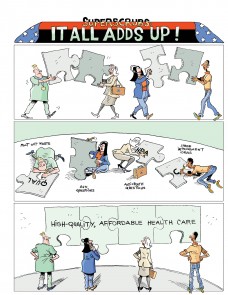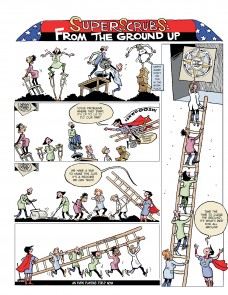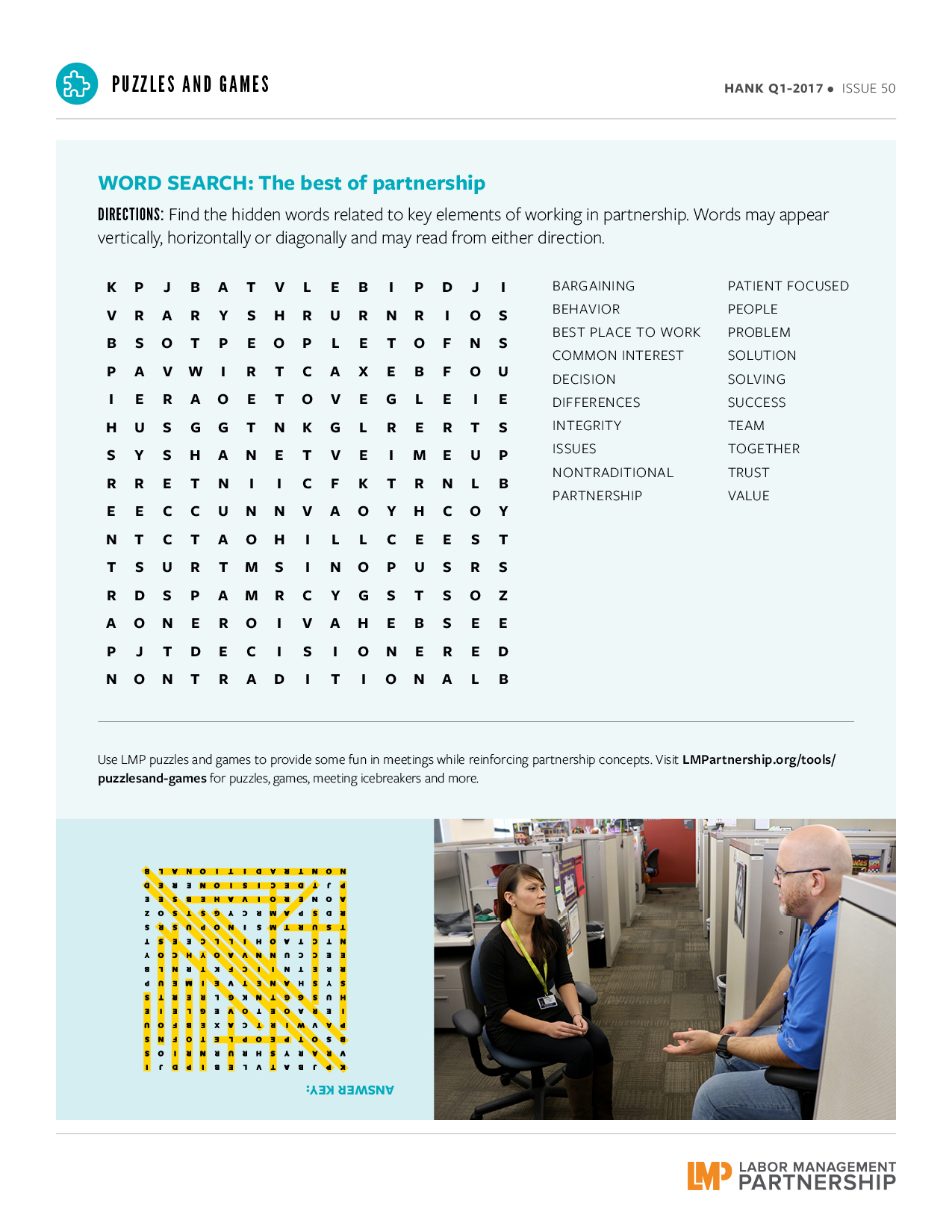Meet Your National Agreement: Training for Everyone, Starting in the Middle
Deck: Building skills among mid-level management and union leaders
“The No. 1 reason for the success of our teams has been personal engagement,” says Alan Kroll, a primary care area administrator in Colorado who co-sponsors nine unit-based teams with his labor and physician partners. “Everyone needs to buy into the process to make partnership work.”
Building engagement and ensuring a consistent work experience have been goals of the Labor Management Partnership since the beginning. But, at the same time, there’s been a good deal of variation around these efforts from location to location across Kaiser Permanente, to the frustration of many managers, workers, and KP members and patients.
That’s why the 2015 National Agreement mandates partnership training for everyone, including the mid-level managers and union leaders who guide others. Early versions of the partnership training for mid-level leaders, which will be available this year, have gotten high marks from UBT sponsors and other leaders who have taken it.
Consistency counts
The agreement calls for “a learning system that supports sustained behavior change, partnership and performance.” This includes joint training and refresher courses—delivered in-person
and/or online—to “achieve the same partnership and employment experience wherever one works in KP.”
The new training for mid-level leaders will include segments on: interest-based problem solving examining the forces that support or undermine partnership core partnership behaviors and principles the strategic importance of the LMP
Joint training is key
The programs are designed to develop successful leaders who can model partnership and spread successful practices—and to ensure that the managers or union representatives helping teams have what they need to support those teams.
“It is very powerful for managers and union leaders to be in training together,” Kroll says. “It sends the message that everyone is important, and sets a foundation to work from when an issue gets stuck.”
The training served as a reminder that good partnership practices also are good leadership practices.
“People want to hear from their leaders,” he says, and to “know what issues we are dealing with and that we can help remove obstacles.”
See the 2015 National Agreement, section 1.E, Education and Training (pages 31–33) for additional information.





